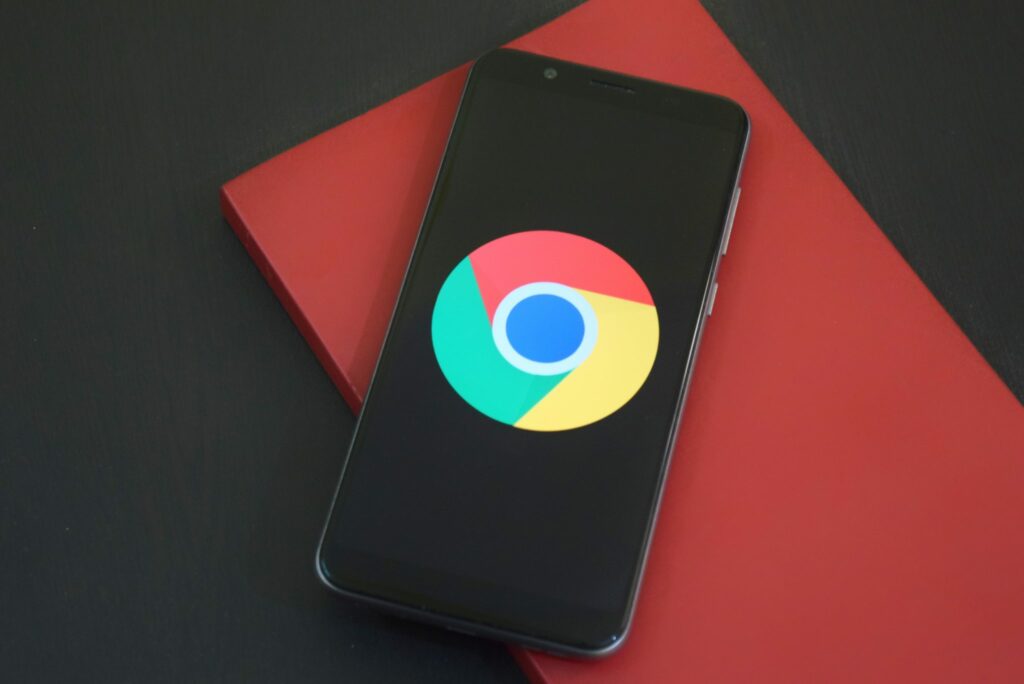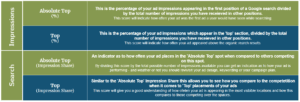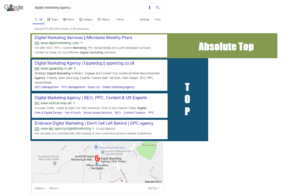It’s been a long time coming. First announcing the news back in November 2018, on September 30th 2019 the Google Ads Average Position metric has now been retired. Going forward, users will have no choice but to use the new positioning metrics Google introduced earlier in the year.
Why the change?
As always, Google are focused primarily on improving the efficiency, simplicity and clarity of its products for all its users. So, following the introduction of two new metrics which provide a clearer insight to where your paid ad is being placed, they decided to sunset the existing feature. In a statement Google said:
“With the availability of these new metrics to understand prominence, we plan to sunset average position in September of this year. If you currently use average position, we recommend that you start using these new metrics when measuring and optimizing for prominence.” – Statement from Google released in February 2019
How does it work?
For those of you who have woken up on the 1st October and suddenly found your average positioning column has vanished here’s a little break down of how the new metric works. There is now some terminology you need to get used to as well as how they work and ultimately influence the effectiveness of your campaign.
What does our PPC Strategist have to say about the changes?
As you would expect our Google Ads team have been reviewing these changes and working on new strategies and plans to ensure they get the best results for our clients. Our PPC strategist Anthony Potts explained that prior to the changes it was easier to predict and plan which position your ad would be in.
If you were higher than planned you could lower your bid, if you were lower than planned you’d just increase it until you get to where you wanted. With the new system, the main challenge we face is strategising for a specific ad position as that data is now less clear.
In some cases, you may find more value in position 3 than 1 and vice-versa. A PPC strategy is all about spending the least amount of money to receive the highest possible returns and while the new metric is useful in many other ways it will require a complete reassessment of your strategy.
Is it better than before?
This wasn’t one of those changes Google made to close a loophole or an exploit, it’s purely a decision-based on user experience and clarity of data.
The problem with the Average Position index was that it gave little insight into both how you are performing next to others as well as where exactly position 1 was located on the page. In some instances, you could even have been placed first but still appear at the bottom of the first page.
This new metric focuses on both the section above the organic results as well as your share of coverage in these spots. Both give a clearer and simpler way to assess and review your ads performance and decide if you are getting value for money or not.
Whether you liked the old system or not the new metric of assessing your ad’s position will inevitably give you a clearer insight into how effective they are performing. You might struggle at first to get ad placements in positions which best suit your plans however you will still be gaining a deeper insight into its performance as a whole.
Like all changes, there may be some room to improve and for some users, it may take a little while to fully get to grips with it but at the end of the day. If the result is better clarity of data and more transparent results than the benefits will be enjoyed by all.
If there’s anything you’d like to add then you can get in touch in the comments below or you are experiencing any problems with your PPC campaign or would like to discuss growing your business through PPC you can of course get in touch with our highly skilled and dedicated PPC team.
[social_warfare buttons=”Facebook, Twitter, Linkedin”]









